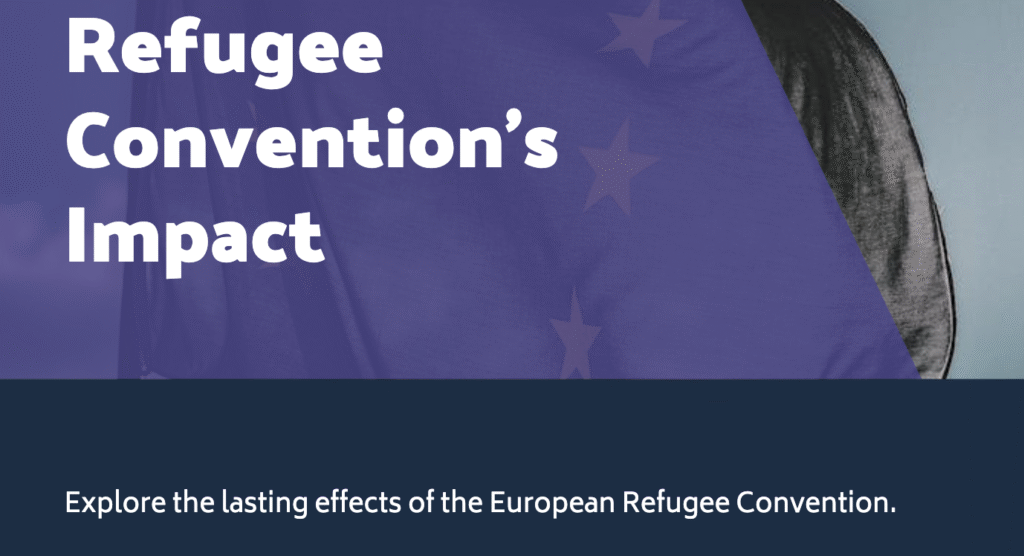Table of Contents
Toggle
Overview of the European Refugee Convention
The European Refugee Convention, formally known as the 1951 Convention relating to the Status of Refugees, is a critical international treaty designed to protect the rights of individuals fleeing persecution. Established in the aftermath of World War II, this treaty defines who qualifies as a refugee and outlines the legal protections, assistance, and social rights they are entitled to receive. One of its primary objectives is to ensure that no refugee is returned to a country where they face serious threats to their life or freedom.
This treaty was later complemented by the 1967 Protocol, which expanded its scope beyond Europe and removed the original temporal and geographical limits. Together, the Convention and Protocol set the foundation for international refugee law, influencing policies and practices globally. Member states are required to implement these standards into their national laws, providing a uniform framework to address refugee issues.
The Convention also emphasizes the importance of international cooperation, urging countries to work together in sharing responsibilities for protecting refugees. By establishing a common understanding and approach, it helps to create a more predictable and equitable system for managing refugee flows and ensuring their safety and dignity.
Fundamental Principles and Entitlements
At the heart of the European Refugee Convention are several fundamental principles aimed at safeguarding the rights of refugees. A key principle is non-refoulement, which prohibits the return of refugees to a country where they could face serious threats to their life or freedom. This principle is crucial for ensuring that refugees are not exposed to further harm.
The Convention also outlines various entitlements that refugees should receive, such as access to legal assistance, the right to work, education, and public relief. These rights are essential for helping refugees rebuild their lives and integrate into new communities.
Additionally, the Convention mandates that refugees should be treated at least as favorably as nationals concerning elementary education, public relief, and social security.

Another critical aspect is the right to be issued identity papers and travel documents, facilitating their movement and ability to lead a dignified life. The Convention underscores the need for family unity, advocating for measures that enable refugee families to stay together or reunite if they have been separated.
By setting these standards, the European Refugee Convention ensures that refugees are afforded protection and the means to achieve stability and self-reliance.
Impact on National Legislation
The European Refugee Convention significantly shapes the national laws of member states by setting uniform standards for the treatment of refugees. Countries incorporate these standards into their legal systems, ensuring that refugees receive protection and rights consistent with international norms. The Convention’s influence extends to various aspects of domestic law, including asylum procedures, social services, and labor rights.
For example, member states are required to provide refugees with access to education, healthcare, and employment opportunities, aligning national legislation with the Convention’s mandates. Additionally, the principle of non-refoulement is enshrined in national laws, preventing the return of refugees to places where they face serious threats.
This alignment not only offers a consistent approach to refugee protection across different jurisdictions but also promotes legal certainty for refugees seeking asylum. Furthermore, the Convention encourages states to develop robust legal frameworks that address the specific needs of refugees, facilitating their integration and ensuring their rights are upheld. Through these measures, the European Refugee Convention plays a vital role in shaping national policies and ensuring that refugees are treated with dignity and respect.
Implementation Challenges
Implementing the European Refugee Convention presents several challenges for member states. One major hurdle is the disparity in resources and capacities among countries, which can result in inconsistent application of the Convention’s standards. Additionally, political climates and public opinion on immigration can influence how rigorously the Convention is enforced, potentially leading to variances in refugee treatment.
Another issue is the administrative burden placed on national systems, which may struggle with processing large numbers of asylum applications efficiently. This can cause delays and backlogs, leaving refugees in prolonged states of uncertainty and vulnerability. Security concerns also complicate implementation, as states must balance the need for protection with the need for safety, sometimes leading to more stringent vetting processes.
Finally, the sheer scale of global refugee movements can strain international cooperation and resources, making it challenging to provide uniform protection and support. These challenges highlight the complexities involved in translating the Convention’s principles into actionable and effective national policies.
Effect on Refugees' Lives
The European Refugee Convention profoundly influences the lives of refugees by ensuring they receive essential protections and support. Access to legal assistance allows refugees to navigate complex legal systems, while the right to work and obtain education helps them build a future in their host countries.
These entitlements are crucial for fostering self-reliance and social integration, enabling refugees to contribute positively to their new communities. Identity papers and travel documents, as mandated by the Convention, facilitate mobility and access to services, ensuring that refugees can move freely and lead dignified lives.
The emphasis on family unity helps to maintain emotional well-being and stability, as families can remain together or reunite after separation. Public relief and social security entitlements provide a safety net, allowing refugees to meet their basic needs. Through these measures, the Convention significantly enhances the quality of life for refugees, offering them hope and opportunities for a brighter future.
Looking Ahead: The Future of the Convention
The future of the European Refugee Convention will likely involve addressing emerging challenges and adapting to a changing global landscape. As the number of displaced individuals continues to rise due to conflict, climate change, and economic instability, the Convention must evolve to remain effective.
Enhancing international cooperation will be crucial for sharing responsibilities and ensuring that all member states can uphold the Convention’s standards. Technological advancements may offer new tools for managing asylum applications more efficiently and securely. Additionally, there may be a growing emphasis on regional solutions and partnerships to address refugee movements more effectively.